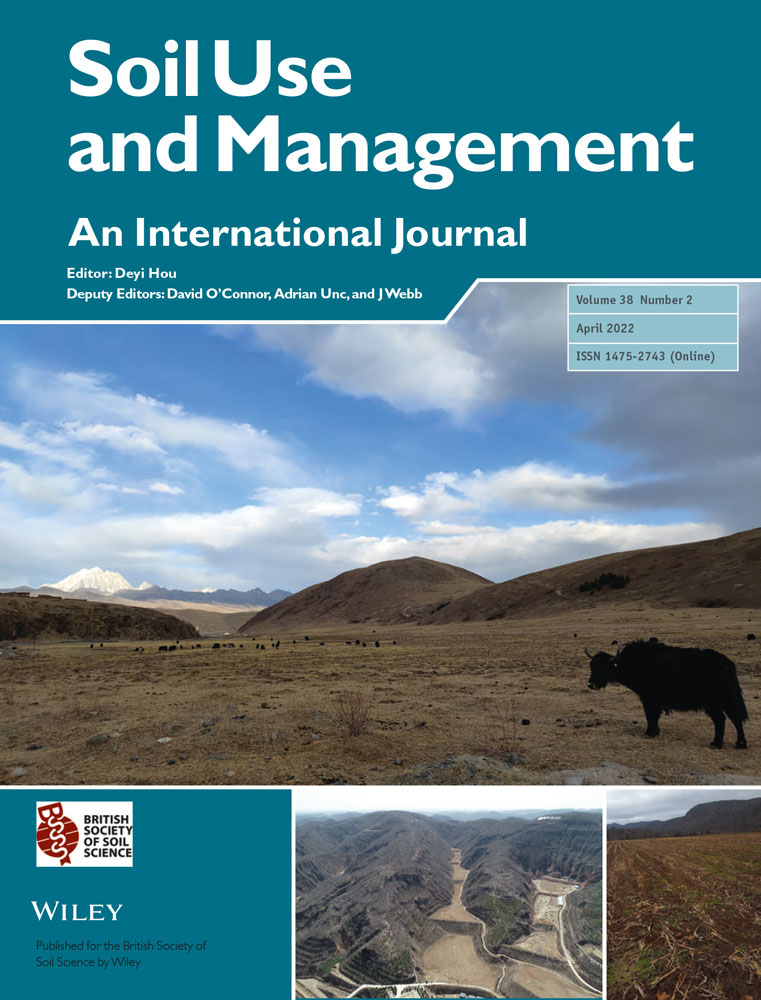Ver ítem
- xmlui.general.dspace_homeCentros e Institutos de InvestigaciónCIRN. Centro de Investigaciones de Recursos NaturalesInstituto de Clima y AguaArtículos científicosxmlui.ArtifactBrowser.ItemViewer.trail
- Inicio
- Centros e Institutos de Investigación
- CIRN. Centro de Investigaciones de Recursos Naturales
- Instituto de Clima y Agua
- Artículos científicos
- Ver ítem
Effects of fertilizer type on nitrous oxide emission and ammonia volatilization in wheat and maize crops
Resumen
About half of the applied nitrogen (N) is not consumed by crops, causing environmental and economic costs. This N can be lost as ammonia (NH3) volatilization, nitrous oxide (N2O) emission or leaching, among others. This work aimed to compare the amount of gaseous N losses using three different fertilizers on two consecutive experiments: one summer crop (maize) and one winter crop (wheat) in the Rolling Pampa, Argentina. The fertilizers used were urea
[ver mas...]
About half of the applied nitrogen (N) is not consumed by crops, causing environmental and economic costs. This N can be lost as ammonia (NH3) volatilization, nitrous oxide (N2O) emission or leaching, among others. This work aimed to compare the amount of gaseous N losses using three different fertilizers on two consecutive experiments: one summer crop (maize) and one winter crop (wheat) in the Rolling Pampa, Argentina. The fertilizers used were urea ammonium nitrate (UAN), calcium ammonium nitrate (CAN) and AN+DMPP (ammonium nitrate-based NPK fertilizer with DMPP nitrification inhibitor). NH3 emissions were estimated using a semi open-static absorption system during the first month after fertilization for each experiment. N2O emissions were estimated using vented static chambers during the growing season of each crop. Results show that CAN or AN+DMPP fertilizers used instead of UAN helped to reduce NH3 volatilization by 45–50% and 62–63% on maize and wheat experiments respectively, but failed to reduce N2O emissions. In addition, contrary to the expected, AN+DMPP increased N2O emissions during the maize experiment. The majority of the gaseous N losses occurred at specific moments of the crop cycle (after N fertilization and around leaf senescence). Losses as NH3 volatilization were higher than N2O emissions in the maize experiment, as expected because of the warmer temperature during this summer crop. However, N2O emissions were higher during the wheat crop, emphasizing the importance of factors such as meteorological conditions, previous land-use, residual soil nitrate and stubble quality on the soil.
[Cerrar]

Autor
Fuente
Soil Use Management 38 (2) : 1-13 (First published: 28 January 2022)
Fecha
2022-01-28
Editorial
Wiley
ISSN
1475-2743
Documentos Relacionados
Formato
pdf
Tipo de documento
artículo
Proyectos
(ver más)
INTA/PNNAT-1128023/AR./Emisiones de gases con efecto invernadero.
Palabras Claves
Derechos de acceso
Restringido
 Excepto donde se diga explicitamente, este item se publica bajo la siguiente descripción: Creative Commons Attribution-NonCommercial-ShareAlike 2.5 Unported (CC BY-NC-SA 2.5)
Excepto donde se diga explicitamente, este item se publica bajo la siguiente descripción: Creative Commons Attribution-NonCommercial-ShareAlike 2.5 Unported (CC BY-NC-SA 2.5)

